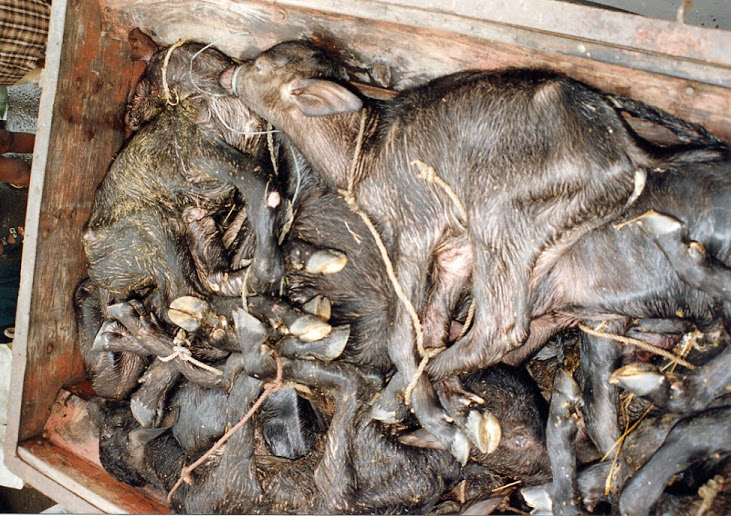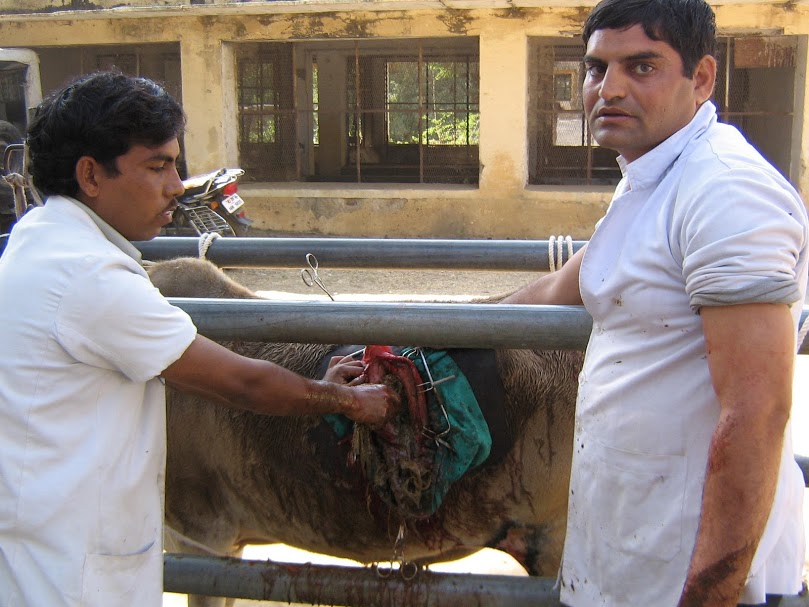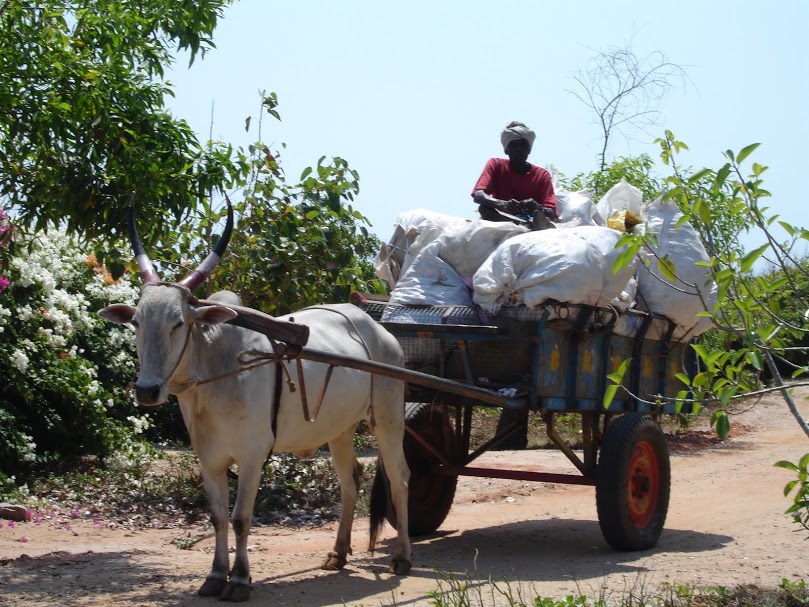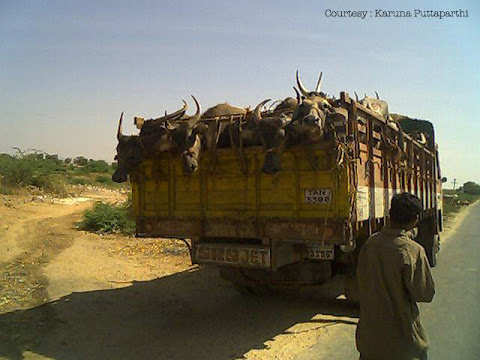Cattle in India
Today many believe that cows naturally produce milk for human consumption. However, like all mammals, cows produce milk to feed their own young. Repeated pregnancies are required for continuous milk production
Traditionally cows were raised as members of the family and revered as a mother because they gave milk. Calves were first given their share of milk. Female calves were raised as milk producers and male, to work in the fields. In the absence of refrigeration milk did not have commercial value. Today every part of the cow is of commercial value from the cow dung and urine to leather and bone.
The life of cattle today
The torture of calves
Calves are deprived of their share of milk. Newly born male calves are largely unwanted. They are sent to slaughter, or sent out to fend for themselves. Or they are tied to a pole allowed to die slowly of starvation. Their carcasses are collected to make ‘ahimsic’ leather products. In the West, they are sold to veal farms at birth, endure the 14 – 17 weeks before slaughter in isolation in veal crates that prevent movement and are fed an anaemia inducing diet so as to produce the tender white veal meat.
Some male calves have their stomachs slit soon after birth, while they are still alive, to make rennet for the cheese industry. In India this is supposed to be banned in favour of microbial rennet. Heart-rending scenes bear testimony to the anguish suffered by cows at the repeated loss of their young. Female calves are brought up to join their mothers as milk producers. Even ‘goshalas’, built for the welfare of cows, separate the calf from its mother in order to milk her.
Oxytocin injections
Cows are subjected to daily oxytocin injections causing excruciating labour-like pains, in the hope of increasing the milk flow.
The slaughter of spent cows
Cows may produce milk for two, even three years when nursing their calves. In the absence of the calf they dry earlier. To keep the milk flowing cows (and buffaloes) are artificially inseminated within 2 months of giving birth. The animal has to produce milk while pregnant. The result, she is spent after about 4 pregnancies and must be retired (slaughtered). The average natural life span of a cow is 26 years yet today most live no more than 6 – 8 years.
Hybrid cows in India
Hybrid cows bred to produce ten times more milk than normal suffer from mastitis, an inflammation of their heavy udders, resulting in pus in the milk. Although these breeds do not survive well in India there are repeated attempts to introduce them.
Death by plastic bag
Widespread disease
Cows tied to posts with short ropes spend hours in the heat of the sun, on the roadsides without water. Others spend their lives in over crowded city shelters standing on concrete floors in their own excreta, instead of in fields. They get very little fresh air and exercise resulting in widespread disease. Many of Mumbai’s cows suffer from tuberculosis and mastitis. Pasteurization does not kill the TB bacilli, which may be passed to the consumer.
Inhumane treatment of bullocks
Bullocks often collapse while transporting large loads in the hot sun without rest, food and water.
Milking machines
Milking machines, if used, cause injuries and bleeding of the udder. They occasionally give electric shocks causing considerable discomfort, fear and impaired immunity, sometimes leading to death.
Transport and illegal slaughter
In many states cow slaughter is forbidden but keeping an animal that is non productive is unaffordable. These animals are clandestinely slaughtered without stunning, or are transported under abysmal conditions to distant slaughter-houses and often slaughtered in front of one another.
As long as we continue to exploit the cow for her milk and hide and other body products this slaughter will not stop.



